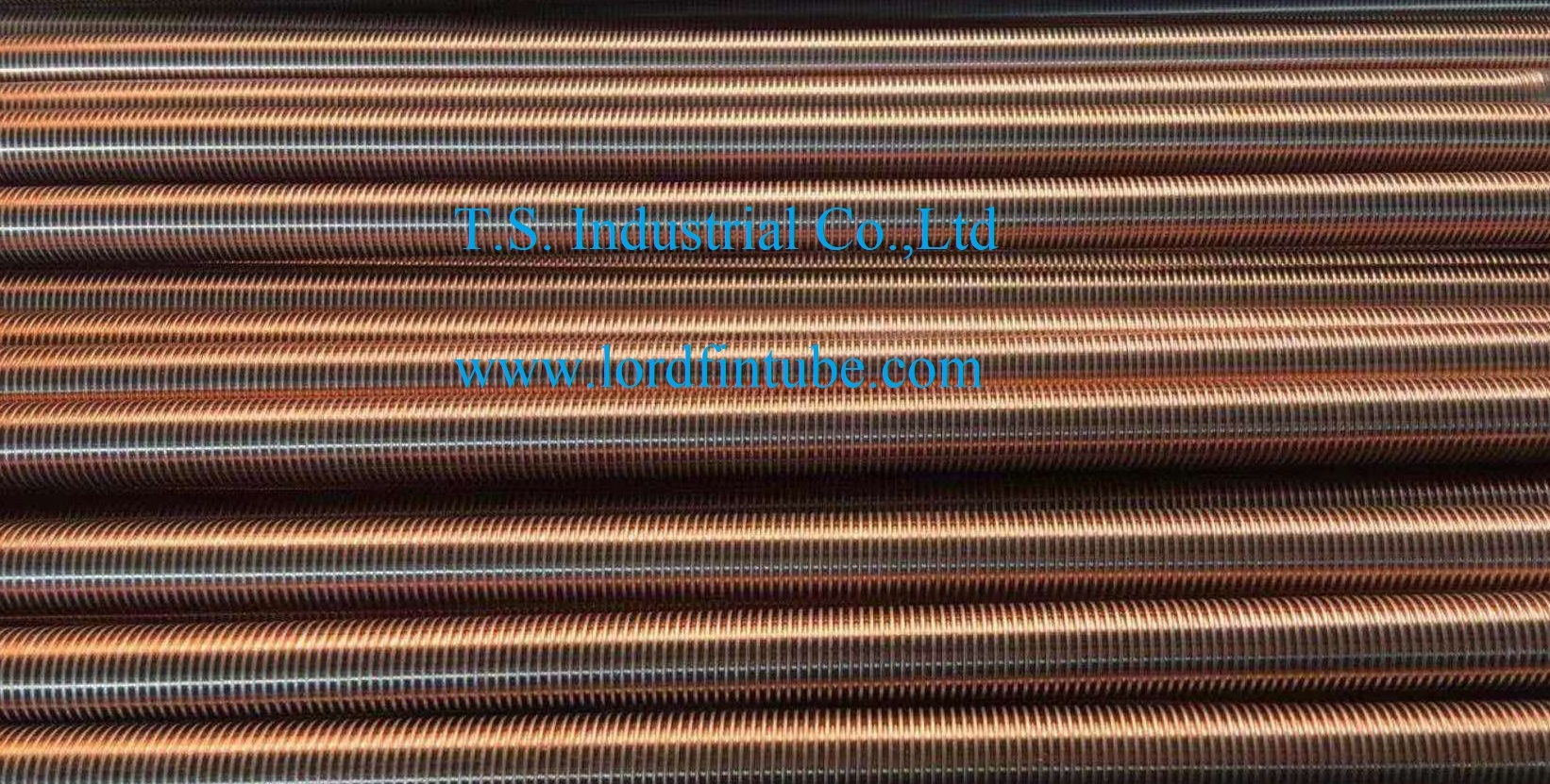S/T Trufin in Copper-Nickel Alloys Tube
Type S/T Trufin is designed for boiling and condensing of hydrocarbons and other liquids. Integral helical fins on the outside of the tubes provide an increase in outside surface area, in effect, minimizing a low heat transfer coefficient normally encountered when evaporating a liquid or condensing a vapor. The inside diameter is basically a smooth surface.
S/T Trufin in Copper-Nickel Alloys Tube External Standards
 This product is produced in alloy C12200 to meet the mechanical, chemical, and testing requirements of ASTM B75/B359 and in alloy C70600 to meet the mechanical, chemical, and testing requirements of ASTM B111/B359. For applications to the ASME pressure vessel code, the product will be produced to meet the requirements of ASME SB75/SB359 for alloy C12200 and to SB111/SB359 for alloy C70600. Other applicable standards - DIN 1787, DIN 17671, DIN 17664, and ADW 6/2 WD TUV 420/5.
This product is produced in alloy C12200 to meet the mechanical, chemical, and testing requirements of ASTM B75/B359 and in alloy C70600 to meet the mechanical, chemical, and testing requirements of ASTM B111/B359. For applications to the ASME pressure vessel code, the product will be produced to meet the requirements of ASME SB75/SB359 for alloy C12200 and to SB111/SB359 for alloy C70600. Other applicable standards - DIN 1787, DIN 17671, DIN 17664, and ADW 6/2 WD TUV 420/5.
S/T Trufin in Copper-Nickel Alloys Tube Plain Sections
Plain ends and lands of 1” (25.4 mm) and over are standard. For plain ends and lands down to 5/8” (15.9 mm), Spacing between lands of 18” (457.2 mm) and over are supplied as standard.
S/T Trufin in Copper-Nickel Alloys Tube Lengths
Overall lengths, with power brush deburred ends, are supplied from 4’ (1.219 m) to 60’ (18.288 m) as standard. Overall lengths, with chamfered ends, can be supplied from 3’ (0.914 m) to 28’ (8.534 m) as standard lengths.
S/T Trufin in Copper-Nickel Alloys Tube Temper
S/T Trufin is supplied as standard, in the “as finned” condition with plain ends and lands in the annealed condition. Material can be supplied in the annealed condition the entire length by special request.
Comments
Post a Comment